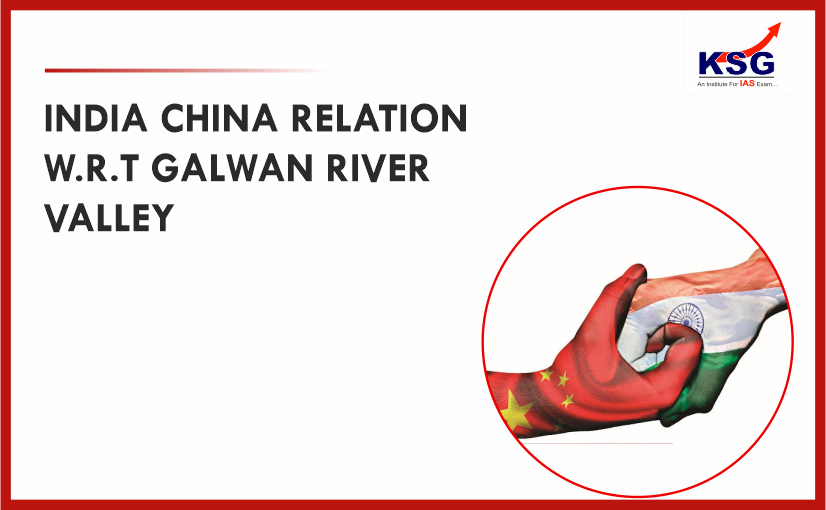
India China relation with respect to Galwan Valley
The Galwan Valley area comes under Sub Sector North (SSN), which lies just to the east of the Siachen glacier and is the only point that provides direct access to Aksai Chin from India.

India China relation with respect to Galwan Valley
Galwan Valley
The Galwan Valley area comes under Sub Sector North (SSN), which lies just to the east of the Siachen glacier and is the only point that provides direct access to Aksai Chin from India. It has recently emerged as issue of contention between India and China . Galwan valley is stunningly beautiful situated at the barren high-altitude cold desert of Ladakh. It was named after River Galwan (River length of almost 100kms) originating from Samzungling area and flowing westward to join the Shyok River which is also known by local Ladakhi’s as ‘River of Death’. The rugged terrain and inhospitable conditions present at the Galwan valley region makes very difficult for the administrative machinery to operate.
Strategic Dimensions of Galwan valley:
Galwan Valley is a direct link of India to the Aksai Chin and Chinese are very skeptical about any construction in the Galwan Valley because it can directly pose a threat to Chinese National Highway No.219 or G219 connecting Tibet to Xinjiang province. India is in the process of upgrading its infrastructural might in the Ladakh region by constructing an engineering marvel Darbuk-Shyok- Daulat Beg Oldie (DSDBO) road connecting southern and central Ladakh to strategically important Northern Ladakh near Karakoram pass, Siachen glacier and Shaksgam valley. The road is most consequential for India’s security apparatus as it is a 255 Kms long all-weather road running almost parallel to the Line of Actual Control (LAC), However, LAC is exactly passing through the Y Nala which is very close to patrolling point number 14 (PP14). This PP14 is the bottleneck area just ahead of the confluence of Galwan river and Shyok river. Traditionally Indian Army patrolled till PP14 and this point is the meeting point for negotiations between Indian and Chinese troops. Moreover, Border Road Organization (BRO) toiled very hard for almost 20 years for the completion of this ambitious project. Apart from this there are some 37 prefabricated military truss bridges including the one constructed over Galwan river and a series of feeder roads along DSDBO road that can be helpful in advancing India’s strategic position in a more profound way. This road provides a potential access to Tank mobilization into the Depsang plains and fairly traumatizing the Chinese authorities. These above-mentioned developments can be attributed for brewing up tensions between Indian and China.
Dark events of the June
In the month of May 2020, The Chinese structures or observation points in the form of tents were discovered by the Indian patrolling troops at PP14 just near the confluence of Shyok and Galwan river. Meanwhile the commanding officer Colonel Santosh Babu of 16 Bihar Regiment held talks with his Chinese counterpart and they both amicably decided to remove the structure. However, the adamant Chinese once again built the tents in the same area i.e. patrol point 14. On spotting these observation points again the Indian Unit dismantled it. In this process a scuffle between the troops of both the country broke out and Chinese used Sticks embedded with nails, barbed wires and Iron rods to attack Indian troops. Since the soldiers were physically fighting on the ridgeline and due to the treacherous area of steep valley and slippery soil many fell down into the cold water of the river Galwan succumbing into the fatal hypothermia. While fighting 20 Indian soldiers embraced martyrdom including CO Col. Santosh babu and causing many more seriously injured. The Chinese too suffered heavy casualties but because of their state policy they never reveal or accept casualties.
In the aftermath of this disturbing event, as a confidence building measure and to establish peace and tranquility in the region a high-level talk was considered upon in order to diffuse the crisis and to lower down the existing perilous condition. As a consequence of the negotiations both Beijing and New Delhi agreed for “Mutual Disengagement” in a phased manner. This Clash was a bitter lesson to the treacherous China and a warning not to mess with India and stop its regular pattern of incursions.
